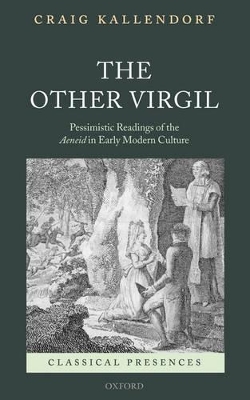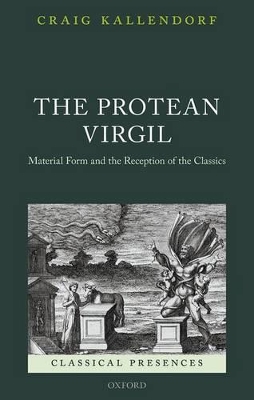Classical Presences
2 total works
The Other Virgil tells the story of how a classic like the Aeneid can say different things to different people. As a school text it was generally taught to support the values and ideals of a succession of postclassical societies, but between 1500 and 1800 a number of unusually sensitive readers responded to cues in the text that call into question what the poem appears to be supporting. This book focuses on the literary works written by these
readers, to show how they used the Aeneid as a model for poems that probed and challenged the dominant values of their society, just as Virgil had done centuries before. Some of these poems are not as well known today as they should be, but others, like Milton's Paradise Lost and Shakespeare's The Tempest, are; in the
latter case, the poems can be understood in new ways once their relationship to the 'other Virgil' is made clear.
readers, to show how they used the Aeneid as a model for poems that probed and challenged the dominant values of their society, just as Virgil had done centuries before. Some of these poems are not as well known today as they should be, but others, like Milton's Paradise Lost and Shakespeare's The Tempest, are; in the
latter case, the poems can be understood in new ways once their relationship to the 'other Virgil' is made clear.
The Protean Virgil argues that when we try to understand how and why different readers have responded differently to the same text over time, we should take into account the physical form in which they read the text as well as the text itself. Using Virgil's poetry as a case study in book history, the volume shows that a succession of material forms - manuscript, printed book, illustrated edition, and computer file - undermines the drive toward textual and
interpretive stability. This stability is the traditional goal of classical scholarship, which seeks to recover what Virgil wrote and how he intended it to be understood.
The manuscript form served to embed Virgil's poetry into Christian culture, which attempted to anchor the content into a compatible theological truth. Readers of early printed material proceeded differently, breaking Virgil's text into memorable moral and stylistic fragments, and collecting those fragments into commonplace books. Furthermore, early illustrated editions present a progression of re-envisionings in which Virgil's poetry was situated within a succession of receiving cultures. In
each case, however, the material form helped to generate a method of reading Virgil which worked with this form but which failed to survive the transition to a new union of the textual and the physical. This form-induced instability reaches its climax with computerization, which allows the reader new
power to edit the text and to challenge the traditional association of Virgil's poetry with elite culture.
interpretive stability. This stability is the traditional goal of classical scholarship, which seeks to recover what Virgil wrote and how he intended it to be understood.
The manuscript form served to embed Virgil's poetry into Christian culture, which attempted to anchor the content into a compatible theological truth. Readers of early printed material proceeded differently, breaking Virgil's text into memorable moral and stylistic fragments, and collecting those fragments into commonplace books. Furthermore, early illustrated editions present a progression of re-envisionings in which Virgil's poetry was situated within a succession of receiving cultures. In
each case, however, the material form helped to generate a method of reading Virgil which worked with this form but which failed to survive the transition to a new union of the textual and the physical. This form-induced instability reaches its climax with computerization, which allows the reader new
power to edit the text and to challenge the traditional association of Virgil's poetry with elite culture.

